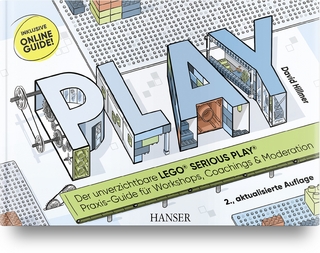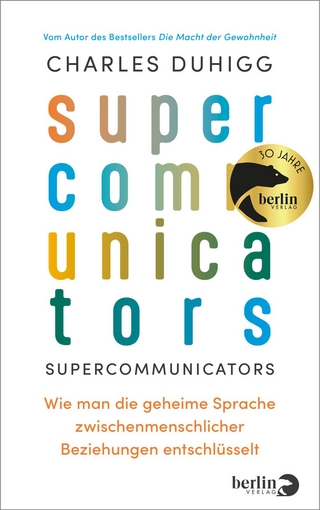
The Purposeful Argument: A Practical Guide with APA Updates
Wadsworth Publishing Co Inc (Verlag)
978-0-357-13866-3 (ISBN)
- Titel z.Zt. nicht lieferbar
- Versandkostenfrei innerhalb Deutschlands
- Auch auf Rechnung
- Verfügbarkeit in der Filiale vor Ort prüfen
- Artikel merken
Harry Phillips earned a Ph.D. in English from Washington State University (WSU) in 1994 and an M.A. in English with a minor in Education from North Carolina Central University in 1988. From 1994 to 2009, he was Instructor of English at Central Piedmont Community College in Charlotte, North Carolina, where he regularly taught Argument-Based Research and a range of American literature courses. He began teaching argument in 1993 at WSU and recommended that this course be a part of the North Carolina Community College Common Course Library, a suggestion that led to the course being adopted across the N.C. Community College system. He continues to view argument as an essential set of skills both for two- and four-year college students, as well as for everyday people intent on crafting effective communication. Dr. Phillips was Curator of Native Plants at the North Carolina Botanical Garden and the principal author of GROWING AND PROPAGATING WILD FLOWERS (University of North Carolina Press, 1985). Since retiring from CPCC, he spends his time as a mediator, climate crisis activist and avid gardener. Patricia Kennedy Bostian is the author of over 90 scholarly works for presses such as Greenwood and Facts on File. She also is the editor of the peer-reviewed scholarly journal TEACHING AMERICAN LITERATURE: A JOURNAL OF THEORY AND PRACTICE (http://cpcc.edu/taltp). For 29 years she has taught literature, composition and humanities courses for several two- and four-year institutions, including Central Piedmont Community College, the University of South Carolina and Johnson C. Smith University. She completed an M.A. in English and doctoral coursework in composition/rhetoric at the University of South Carolina and now is completing an M.A. in Humanities from California State University.
Part 1: How to Approach Argument in Real Life.
1. Argue with a Purpose. What Argument Is and What Argument Is Not. Excerpt from “The Price of Admission,” by Thomas Frank. Recognize Where Argument Is Appropriate in Real Life. Establish Local Context via the Research Process. Determine Your Audience. Establish Local Context for Your Issue. Connect Local and Global Contexts. Recognize Why Arguments Break Down. Arguments Break Down When They Do Not Persuade an Audience. Arguments Break Down When There Is a Lack of Balance in the Support. Arguments Break Down When the Audience Is Poorly Defined. Arguments Break Down When They Contain Fallacies. Arguments Break Down When They Do Not Fairly Represent Opposing Views. Match Argument with Purpose. Toulmin-Based Argument. Middle Ground Argument. Rogerian Argument. Argument Based on a Microhistory.
2. Explore an Issue that Matters to You. Determine What Matters to You and Why. School/Academic. Workplace. Family/Household. Neighborhood. Social/Cultural. Consumer. Concerned Citizen. Choose an Issue within a Topic. Pre-Think about Your Issue. Brainstorming. Freewriting. Mapping. Move from Boring to Interesting. Define and Target Your Audience. Stake, Defend, and Justify Your Claim. Develop a Claim, Reasons, and Qualifiers. Argue with a Purpose. Vary the Types of Support You Bring to an Argument. Support Based on Fact. Support Based on Your Character. Support Based on the Emotions of an Audience. Working with a Target Audience: Two Examples. Argue at the Right Moment. Getting Started.
Part 2: How to Establish Context Through Research.
3. Develop a Research Plan. Use Reference Works, Encyclopedias, and Topic Overviews Profitably. Read an Overview of Your Topic. Gather Search Terms. Use Search Engines to Find Internet Sources on the Surface. Web and on the Deep Web. Search the Surface Web. Search the Deep Web. Perform Keyword Queries. Find News Sites and Use RSS Feeds to Receive Updates. Find and Use Databases in Libraries. Find and Use Primary Sources. Find and Use Government Sources. Find and Use Multimedia Sources. Find Books. Find Books in Libraries. Find Books on the Internet.
4. Evaluate and Engage with Your Sources. Take Notes, Read Critically, and Evaluate Internet Sites. Critically Read Material on the Internet. Evaluate Internet Sites. Take Notes, Read Critically, and Evaluate Articles. Read Articles Critically. Reading Strategies for Longer Articles. Evaluate Articles. Take Notes and Read Books Critically. Take Notes and Evaluate Primary Sources. Introduce and Comment on Sources. Quote and Cite Quotations. Quoting Material Quoted in the Original Source. Alter Quoted Material. Summarize and Cite Summaries. Summary Checklist. Paraphrase and Cite Paraphrases. Avoid Plagiarism. Documentation: Works Cited Page.
5. Read Critically and Avoid Fallacies. Define Fallacies. Identify and Avoid Fallacies. Avoid Fallacies of Choice. Blanket Statement. False Dilemma, Either–Or, and Misuse of Occam’s Razor. Slippery Slope. Avoid Fallacies of Support. Circular Argument. Hasty Generalization and Jumping to Conclusions. Faulty Causality: Post Hoc, Ergo Propter Hoc. Non Sequitur, Red Herring, and False Clue. Straw Man Argument or Argument Built on a False Fact or Claim. Avoid Fallacies of Emotion. Ad Hominem. Testimonials and False Authority. Bandwagon. Ad Misericordiam. Scare Tactics. Avoid Fallacies of Inconsistency. Moral Equivalence. Material Equivalence. Definitional Equivalence. Inconsistent Treatment (from Dogmatism, Prejudice, and Bias). Equivocation. False Analogy.
6. Work Fairly with the Opposition. Why the Opposition Matters. Resist Easy Generalizations. Listen to Local Voices. Summarize Other Voices Fairly. Value Expertise over Advocacy. Avoid Bias When You Summarize. Find Points of Overlap. Identify Common Ground with the Opposition. Respond to Other Views.
Part 3: How to Plan, Structure, and Deliver an Argument.
7. Explore an Issue. Use Definitions. Seven Types of Definition. Discover Cau
| Erscheinungsdatum | 02.01.2020 |
|---|---|
| Verlagsort | Belmont, CA |
| Sprache | englisch |
| Maße | 185 x 23 mm |
| Gewicht | 839 g |
| Themenwelt | Sachbuch/Ratgeber ► Beruf / Finanzen / Recht / Wirtschaft ► Briefe / Präsentation / Rhetorik |
| Schulbuch / Wörterbuch ► Wörterbuch / Fremdsprachen | |
| Geisteswissenschaften ► Sprach- / Literaturwissenschaft ► Sprachwissenschaft | |
| ISBN-10 | 0-357-13866-X / 035713866X |
| ISBN-13 | 978-0-357-13866-3 / 9780357138663 |
| Zustand | Neuware |
| Informationen gemäß Produktsicherheitsverordnung (GPSR) | |
| Haben Sie eine Frage zum Produkt? |
aus dem Bereich


